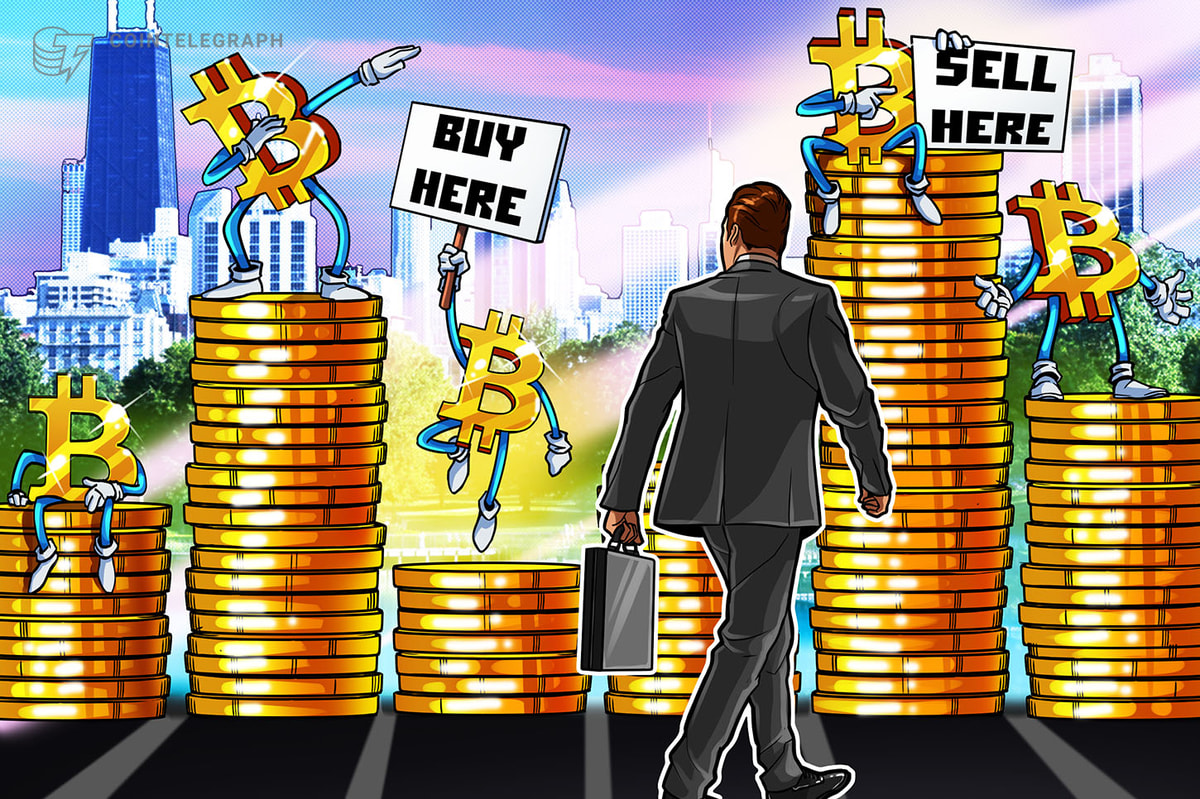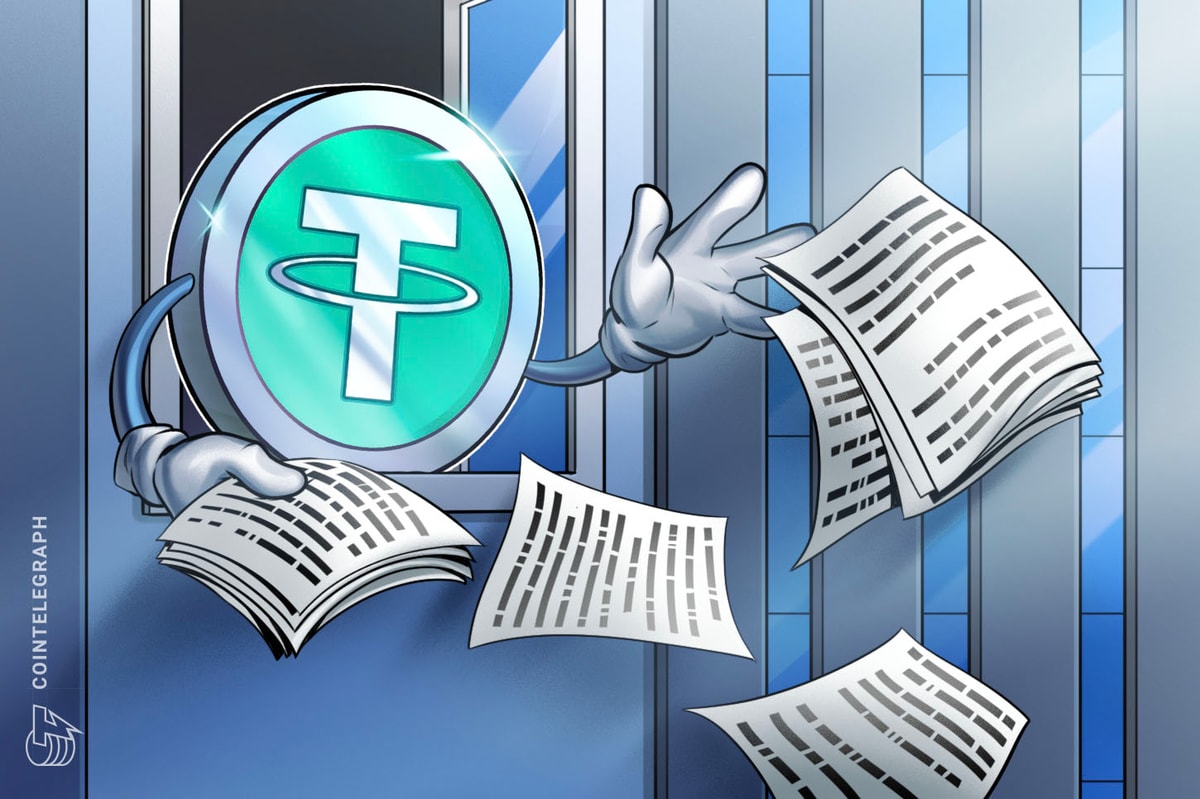The failure of FTX triggered a notable growth of self-custody in 2022, with numerous cryptocurrency investors transitioning from centralized exchanges (CEX) to hardware or software wallets.
The rising popularity of self-custody could even potentially erase the need for centralized exchanges one day, according to Binance CEO Changpeng Zhao. But how would people buy or sell cryptocurrencies without centralized exchanges?
The crypto industry already offers ways to exchange cryptocurrencies like Bitcoin (BTC) for fiat money without using a CEX like Binance. However, such a process is associated with certain pros and cons and may require additional research.
This article will discuss the most straightforward exchange methods to shed some light on buying or selling crypto without using a centralized crypto trading platform.
Bitcoin ATMs
Bitcoin-enabled automated teller machines (ATMs) are probably one of the easiest ways to exchange fiat money for crypto and vice versa. Like conventional ATMs, Bitcoin ATMs allow users to deposit and withdraw money using cash or a debit card. But instead of a bank account, a Bitcoin ATM requires users to have a BTC wallet address to deposit or withdraw money.
Like a traditional ATM, a Bitcoin ATM has a monitor, a QR scanner, a bill acceptor and a dispenser. To connect their Bitcoin wallet to a crypto ATM, users are usually prompted to scan a QR code corresponding to their BTC wallet address.

While providing a simple way to exchange money against cryptocurrencies, Bitcoin ATMs suffer from limited global adoption.
According to data from CoinATMRadar, there are roughly 34,000 Bitcoin ATMs in 80 countries worldwide, with almost 85% of all crypto ATMs in the United States. About 4% of Bitcoin ATMs are located across Europe, with most of those located in Spain, Poland, Romania, Switzerland and Austria.

The infrastructure of global cryptocurrency ATMs has also seen a significant decline recently. According to data from CoinATMRadar, 412 crypto ATMs were removed from the grid worldwide in the first two months of 2023, compared with 1,000 monthly crypto ATM installations between December 2020 and January 2022.
Given the limited reach of crypto ATMs, one shouldn’t rely entirely on their capability to exchange fiat for crypto. According to some industry executives, crypto ATMs have also been increasingly scrutinized by regulators recently, which could bring even more issues to the exchange method.
“For a long time, ATMs provided an excellent service to anyone looking to buy and sell Bitcoin privately,” Trezor’s Bitcoin analyst Josef Tetek told Cointelegraph. “Current global trends suggest that this era is coming to its end, as ATM providers are becoming regulated just like any other financial institution,” he noted, suggesting that Bitcoin ATMs are likely to become significantly less private in the near future.
Another weak spot of Bitcoin ATMs is high transaction costs, with fees often ranging from 5–20%.
Peer-to-peer Bitcoin exchange platforms
Peer-to-peer (P2P) Bitcoin exchange marketplaces are among the most common crypto exchange options alongside Bitcoin ATMs. Such platforms allow users to trade digital currency directly with each other without the need for a centralized third party to facilitate the transactions.
Unlike CEXs, P2P exchanges don’t rely on automated engines to complete transactions, allowing users to manually choose their preferred offer, trade directly with a counterparty, and transact funds using a self-custodial wallet. Such platforms are less vulnerable than CEXs due to their independence from intermediaries controlling funds during a trade.
Many industry executives believe that P2P crypto marketplaces are likely to be the future of crypto due to their unique features. “P2P exchanges are far more resilient to regulatory crackdowns than centralized exchanges,” Jan3 CEO Samson Mow told Cointelegraph, adding that it would be good to have more P2P options.
“P2P services are the future of Bitcoin adoption, but only if they can successfully avoid intruding on users’ privacy,” Trezor’s Tetek said. He specified that some regulatory restrictions, like Know Your Customer (KYC), could essentially make P2P crypto services useless, stating:
“Having a P2P service with KYC is merely a variation of using a CEX but with worse liquidity.”
While providing a more resilient option on the regulatory side, P2P services are often associated with security issues, according to Quantum Economics founder and CEO Mati Greenspan. P2P exchanges like Binance P2P or now-terminated Paxful and LocalBitcoins are “certainly a step in the right direction,” he said, adding:
“This sort of online marketplace maintains the decentralized ethos of crypto, but it is also susceptible to attacks from both regulators and hackers.”
Crypto on-ramp/off-ramp integrations on software or hardware wallets
Another common way to buy or sell crypto without a CEX is using an on-ramp or an off-ramp solution provided within a self-custodial wallet through a third-party payment provider.
Software wallets like Exodus and hardware ones — like Ledger and Trezor — offer several methods to deposit or withdraw Bitcoin using default software through various payment integrations. Such wallets often allow users to buy crypto or cash out their coins using bank transfers, debit or credit card payments, Apple Pay and other options, depending on the country of the user’s bank location.
Providing a simple alternative to Bitcoin ATM or P2P services, wallet exchange integrations are currently accompanied by issues like limited coverage due to the low adoption of crypto payment partnerships worldwide. Due to this issue, residents of many countries may find it impossible to exchange their crypto against fiat because their banks aren’t supported on the payment provider’s network.
However, one may also find that wallet exchange integrations are a bit costly in terms of fees. For example, some third-party application programming interface (API) providers on Exodus Wallet charge up to 12% in automated clearing house transfer fees.

Software and hardware wallets are usually integrated with more than just a single off-ramp or on-ramp provider, offering a significant variety of choices. Some providers include PayPal, MoonPay, Transak, Sardine, Banxa, Coinbase Pay, Onramp.money and Mercuryo — among others.
Offline P2P exchange
One doesn’t necessarily need to use online exchange services to buy or sell Bitcoin. There is an opportunity to do that in person or by interacting with investors who want to cash out or acquire some cryptocurrency on social media apps.
“Various alternatives do exist for offline transactions where the buyer meets the seller in person. Depending where you live, this might happen at a regular currency exchange shop or through a known black market dealer,” Greenspan told Cointelegraph. He referred to groups on messengers like Telegram or WhatsApp, where buyers and sellers are constantly making connections. “I’ve even heard of people using sites like Craigslist,” the exec added.
Offline P2P exchange of Bitcoin is the “best choice for privacy-minded individuals,” Trezor’s BTC analyst Tetek believes. He stressed that exchanging Bitcoin in person is essentially returning to the roots of BTC exchange. “Bitcoin meetups are usually the best place to find fellow Bitcoiners looking for an exchange,” he said.
As everything has pros and cons, offline P2P exchange isn’t unique, and some massive concerns are associated with such a Bitcoin exchange method.
The biggest risks of offline P2P exchange are related to safety and limited scalability, Quantum Economics’ Greenspan said, adding:
“There are loads of disadvantages from safety concerns to the uncomfortable feeling of dealing with a complete stranger, but mostly it’s just not a very scalable solution.”
Such a crypto exchange method also requires users to be much more knowledgeable and savvy than just purchasing online at a well-known crypto exchange.
Can you buy Bitcoin on a DEX?
While considering options for buying or selling Bitcoin without interacting with a CEX, one may consider using a decentralized exchange (DEX) as an alternative. But should a DEX count as a standalone option to a CEX in this regard?
Despite offering the opportunity to buy or sell Bitcoin, DEXs usually require users to have some exposure to crypto before the transaction. That means that Bitcoin can only be purchased or withdrawn with the help of other cryptocurrencies on a DEX.
Additionally, some issues currently prevent DEXs from serving as a solid alternative to CEXs in terms of buying or selling crypto, according to Trezor’s Tetek. “Some of the major challenges include unfriendly user experience, high spreads resulting from low liquidity, and concerns about receiving ‘dirty’ Bitcoin or fiat,” he said. The analyst added that these issues must be addressed for further adoption of DEXs.
It also depends on what one refers to as a DEX, Jan3’s Mow added. “If you’re referring to an Ethereum-based DEX, it’s not an alternative at all because, at the base layer, Ethereum isn’t decentralized,” the executive argued, adding that a real DEX won’t have any centralized part that can be shut down.
Is there a future without centralized crypto exchanges?
Despite the industry offering many decentralized options to exchange Bitcoin against fiat, CEXs remain a significant player.
Apart from offering a straightforward entry into the crypto market and Web3, CEXs are also an important industry component in terms of price discovery, according to Bitcoin proponent Mow. He stated:
“Centralized cryptocurrency exchanges will always continue to exist, and they are an important venue for price discovery and liquidity. Only regions that endorse a heavy-handed approach will force exchanges out, but that’s really to the detriment of their people.”
It’s yet to be known whether CEXs will continue to be a key part of the crypto industry in the coming years. Some experts are confident that the industry will get rid of centralized exchanges one day.
“For now, centralized exchanges remain a necessary scourge on the industry, and I do look forward to the day we can do without them entirely,” Quantum Economics CEO Greenspan said.
“Centralized exchanges pose a risk not only to the privacy and security of Bitcoin users but also undermine the very reason Bitcoin came into existence — creating a parallel financial system and supporting the financial autonomy of its holders,” Trezor’s Tetek stated. He added that CEXs undeniably served as an accelerator for Bitcoin adoption in the past, but they are slowly becoming its “biggest enemy.” The BTC analyst added:
“I can definitely imagine a world without any CEXs. When Bitcoin becomes a global monetary standard, there will be no need to exchange Bitcoin for fiat.”



